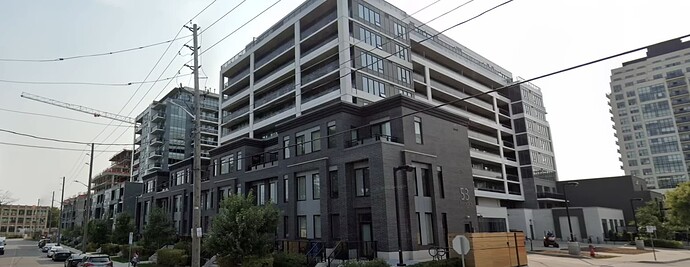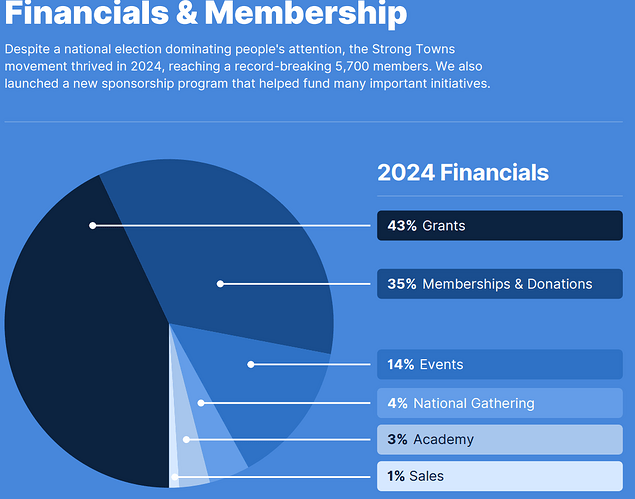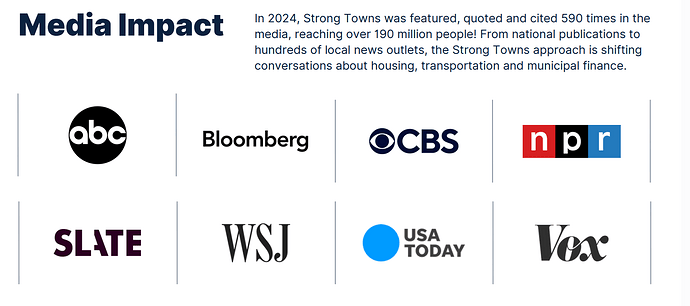Be careful with this analysis…there a few problems…its heavily slanted… while its well put together and and has a logic train of thought and conclusion and im sure NJB means well…, I’m going to have to respectfully disagree with this one…feels very cherry picked data and here is why i believe that
1st Government should not be measuring itself by tax revenue per acre, its not a business trying to make money. I mean look at the incentive here…what is the likely outcome?.. Obviously if you get rid of cars and roads and parking and stack citizens into high rises into less square feet you get higher tax revenue per acre… if thats you goal to maximize revenue… then pack em in like sardines…
Maybe if there is an inequity in services per zip code… change the property tax per zip code… oh wait they already do that… if its inbalanced … just realign the costs and let market forces take over…
in fact if you take a step back I believe this is actually an analysis slanted to be used as propaganda for counties to move toward 15 minutes cities…
your 1st subtle clue is in the 2nd video where the cartoon guy has an option to choose development based on climate change impact on his phone… yeah i know it goes by fast and easy to miss… but why is it there? I thought we were talking about asphalt and pipe $ expense…now i have a clear carbon reduction message instead
your second clue is how the poor neighborhood is subsidizing the rich one…I can tell you that is not the case in Portland… its the other way around… nicer neighbors here start in the double digits thousands property taxes
your third clue is how every answer to the problem is car-less 15 minute cities
your fourth clue is no mention of rural solutions… I own a plan B out in rural… the county doesn’t maintain the road…we on the road do, the county doesn’t offer water the community has their own water district etc… same with the fire district…its community paid not county or city so if the rural population sprawled out even further than suburbia… and yet its all WAY cheaper than the city or suburbia.?.. in fact my taxes are 1% of that in in suburbia!. granted my house in suburbia is way nicer than my shop in rural but the lot size is the same… but still have the same infrastructure needs .wait how is that possible? according to this analysis it should be WAY more expensive than the city or suburbia the sprawl and roads and pipes are soo much longer…so much more infrastructure to maintain… soo much more cost… yet its not. So the expense of suburbia is not due to maintenance of roads and utilities… its due to something else…most likely graft much like the school bonds…
5th if this is true why are the taxes highest in the city center? and lower the further out you get?
your 6th clue is how were cities NOT BANKRUPT in the 50’s? road were still there, utilities were still there suburbia was still there… I think we are focused on a symptom not the disease
rest assured then the next analysis will tell you if suburbia is too expensive , then for sure rural is… i mean just think of the road expenses alone… everybody into 15 minute car less cities…
your 7th clue is its a all put together by strong towns non profit supported by grants ie an NGO and is given a huge captured media support… NPR? if Captured Media is behind you … you are not the resistance
Finally they only focus on infrastructure cost vs tax revenue not all the services provided requiring tax revenue… thats a nice way to lie by statistics… there is a vast difference between services provided in portland vs suburbia vs rural…
portland has 10X required unwanted by the majority tax funded services,
and is 10x the cost of suburbia… there are infinite government programs and funding and buildings for equity underwater basket weaving training for indigenous handicapped quadsexual Atlanteans downtown… none of those programs are available in suburbia… just a real life example
we dont have multimillion $ taxfunded funded tree inspectors out here in suburbia
and dont get me started how impossible it is legally to remove a dying tree on your own property about to fall on your house
Portland tree inspectors getting a new boss and stripped of $2M to address complaints
if suburbia has more pipes…here is an idea raise the water bill… if it has more roads…raise the gas tax…I’m not sure the funding and expense model here was completely transparent…
Finally that town in Louisiana and all the others may really make be bankrupt due to graft or unfunded pensions…not pipe and asphalt…In Portland they collect tax revenue for the homeless to the tune of 1.2 billion $ a year… where do they spend it ? well we need a dozen administrators at ~500k a year + they spend an average of 1k PER tarp or tent for the homeless…which they can get over and over… a grade school kid could save portland over a billion $ and double the amount of tents and tarps for the homeless with two 1 minute online orders from harbor freight and Big 5…
Portland is bankrupt and does not have a 57% tax rate due to suburbia sprawl infrastructure cost of roads and pipes its due to massive graft and waste on socialist programs.
And Eugene Oregon in the video? my daughter went to school there…my uncle live there is whole life…suburbia wasn’t a $ problem 20 years ago and it hasn’t changed that much, Eugene its a mini carbon copy of Portland…its not the roads and pipes that is the problem…its all the socialist programs and graft…

![Suburbia is Subsidized: Here's the Math [ST07]](https://img.youtube.com/vi/7Nw6qyyrTeI/maxresdefault.jpg)



